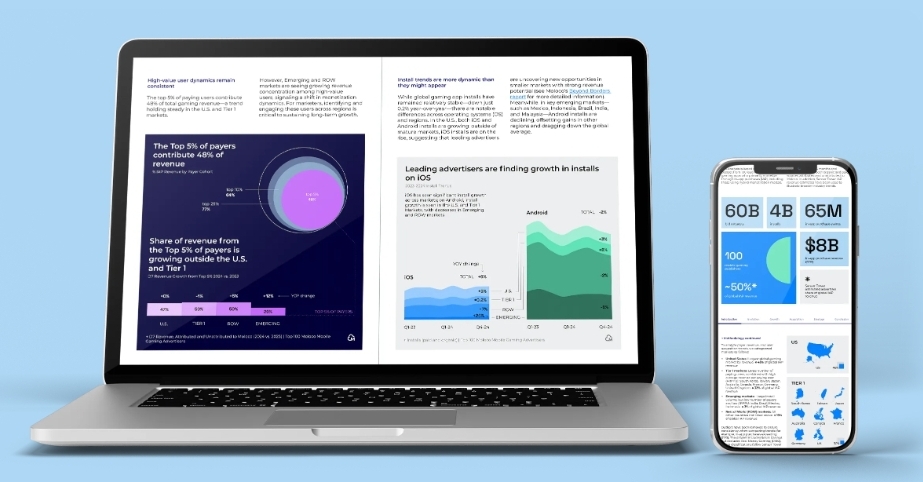How the Mobile Gaming Industry Can Unlock Sustainable Growth: Key Customer Experience Takeaways from Moloco’s Research
In a rapidly evolving digital world, mobile gaming continues to dominate consumer attention and entertainment. Yet, recent insights from Moloco’s 2025 State of Mobile Gaming report reveal a significant shift. Rather than chasing short-term wins, leading mobile game developers are now focusing on sustainable customer experience (CX)-driven growth.
Interestingly, the research found that the top-performing gaming apps improved customer lifetime value (LTV) by up to 6%. This was possible not through sheer volume, but through refined strategies focused on long-term engagement. As user acquisition (UA) costs rise and markets saturate, industry leaders are embracing smarter, CX-focused models that align better with lasting success.
Re-engagement Becomes a Game-Changer
First and foremost, customer re-engagement is no longer an afterthought. Instead, it is central to sustaining growth. The five most successful gaming companies are doubling down on re-engagement tactics. These include targeted push notifications, email marketing, and dynamic in-game events that bring users back repeatedly.
Moreover, live operations like time-limited events, seasonal updates, and promotional offers are enhancing the customer journey. These features not only extend the lifespan of games but also strengthen brand loyalty. Therefore, retention is emerging as the new acquisition.
Creative Optimization is Key to Capturing and Keeping Attention
In addition to re-engagement, creative optimization plays a vital role. Customers expect seamless and immersive experiences. Thus, top gaming advertisers are testing and refining ad creatives more aggressively than ever before. This ensures players are hooked early and retained longer.
While short-term clicks might deliver spikes in downloads, only compelling storytelling and visual coherence can ensure long-term CX. Winning ads now reflect the actual in-game experience more closely, building trust and reducing churn.
Furthermore, creative optimization isn’t static. Developers use real-time performance data to iterate constantly. This allows for personalized experiences that match individual user behaviors and preferences.
High-Value Users Drive the Most Revenue
Another essential insight is the dominance of high-value users. In fact, the top 5% of U.S. iOS high-value users—who represent only 0.02% of global installs—now generate 20% of global mobile gaming revenue.
Given this, developers are focusing more on understanding and serving these high-intent users. They analyze behavioral data to identify patterns, segment audiences, and customize offers accordingly. As a result, user journeys are becoming more tailored, enhancing satisfaction and loyalty.
Although Android holds nearly half of global revenue, iOS has taken the lead in in-app purchase (IAP) earnings. It now accounts for 55% of global IAP revenue. That’s a significant change, driven largely by U.S. and smaller international markets.
Rising Costs Make Strategic User Acquisition Critical
However, acquiring top-tier users is becoming costlier. The top 1% of winning bid prices on iOS rose by a massive 140% in 2024. Despite this, median bid prices have remained stable, indicating selective competition.
This means that advertisers must now optimize campaigns for quality over quantity. Rather than casting wide nets, they must zero in on users likely to deliver strong LTV. Without a well-defined CX strategy, brands risk spending heavily on users who churn early.
Emerging Markets Provide New Avenues for CX-Led Growth
Despite the dominance of markets like the U.S., emerging markets are offering significant growth potential. These regions are less saturated and come with lower UA costs. More importantly, they house untapped high-value users.
Game developers that localize content and design culturally relevant experiences stand to win big. Additionally, developers can tailor onboarding flows, language options, and payment systems to match the preferences of these audiences. This customer-centricity not only attracts new players but also fosters deeper engagement.
Global Expansion Strategies Align with Enhanced CX
Indeed, global expansion is a top priority for successful apps. Yet, entering new markets is not merely about translation. It requires a complete overhaul of user experience to meet local expectations.
For example, many companies invest in market research, localization, and user feedback loops. This allows them to build emotionally resonant connections with users worldwide. Moreover, apps that respect cultural nuances often see higher retention and monetization.
Personalization and Real-Time Data are Fueling the Shift
Supporting these strategies is a growing reliance on operational machine learning. By leveraging real-time data, developers can personalize the user journey at scale. From personalized offers to adaptive gameplay, ML is helping teams understand what works, when, and for whom.
Through continuous feedback and analysis, developers can experiment faster and respond to changing user needs. This agility enhances CX while minimizing wasted spend. In the long run, it ensures better ROI and player satisfaction.

Long-Term Vision is Becoming Non-Negotiable
According to Corvin Ampleev, Director of User Acquisition at MobilityWare, delivering lasting joy is key to sustainable growth. His view aligns perfectly with Moloco’s findings. The most forward-thinking brands now prioritize lasting engagement over fast conversions.
This shift in mindset demands cross-functional collaboration between product, marketing, and data teams. All must work in unison to create frictionless, rewarding experiences for users. When CX takes center stage, everything else—from revenue to reputation—follows.
Conclusion: The Future Lies in Purposeful Growth
In conclusion, Moloco’s research confirms a clear truth: short-term tactics alone can no longer sustain mobile gaming success. Instead, developers must invest in customer experience from the first interaction onward.
By focusing on re-engagement, creative testing, and global market adaptation, the best apps are already redefining what success looks like. In turn, players are enjoying richer, more immersive journeys that keep them coming back.
As the mobile gaming industry approaches $126 billion in projected revenue by 2025, the winners will be those who place CX at the heart of every decision. With rising costs and fierce competition, only those who prioritize long-term value will thrive in the next era of gaming.

